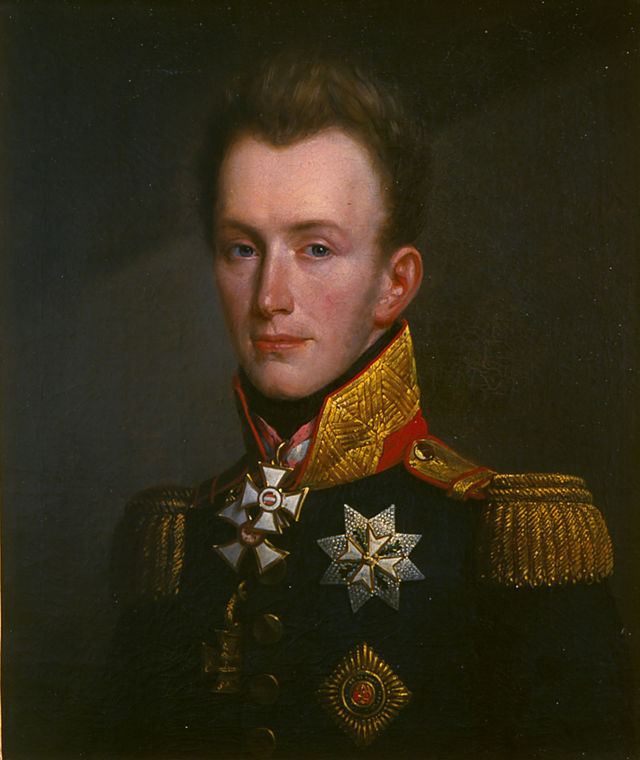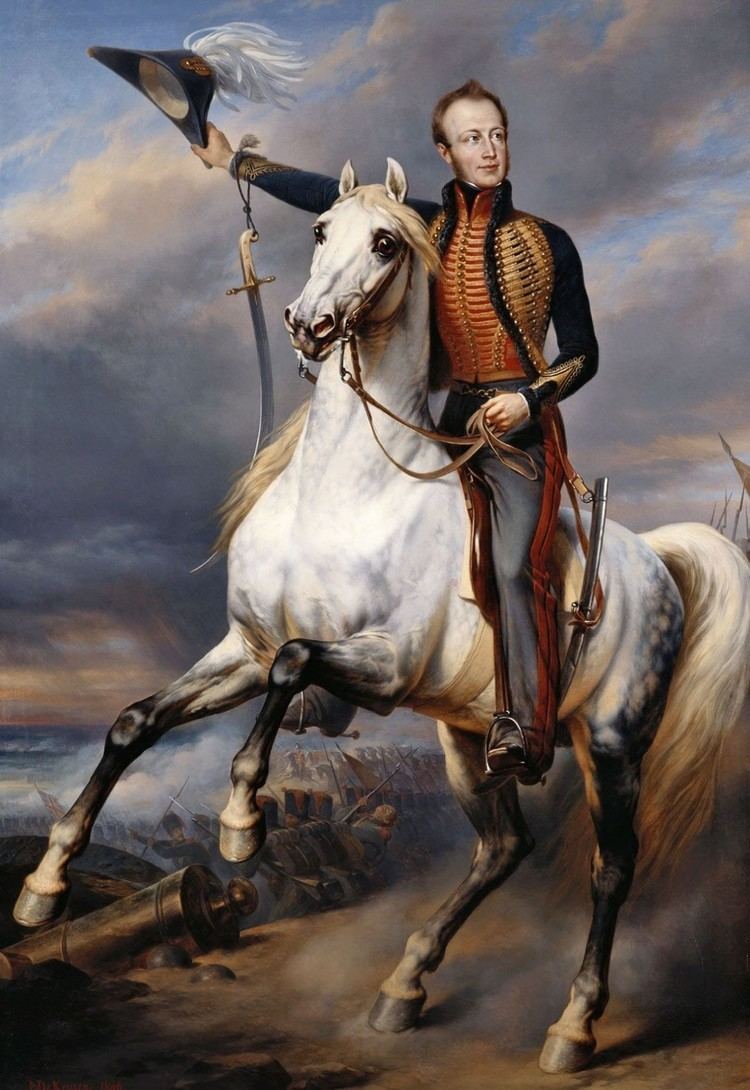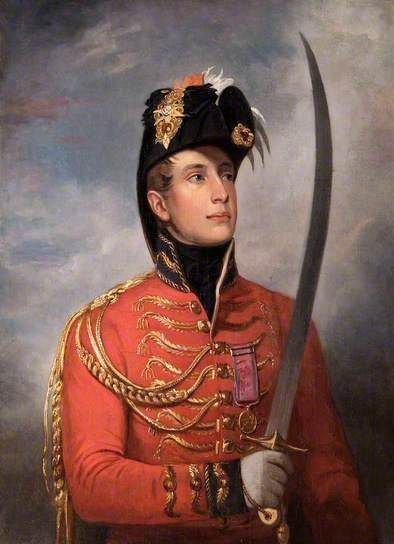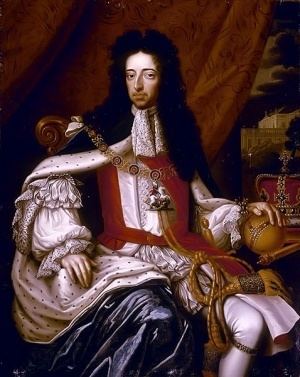 | ||
Religious wedding ceremony of the prince of orange and m xima zorreguieta part 1
Prince of Orange is a title originally associated with the sovereign Principality of Orange, in what is now southern France. Under the Treaty of Utrecht of 1713, Frederick William I of Prussia ceded the Principality of Orange to King Louis XIV of France (while retaining the title as part of his dynastic titulature). After William III of England died without children, a dispute arose between Johan Willem Friso and Frederick I of Prussia, which was settled in the Treaty of Partition (1732); consequently, Friso's son, William IV had to share use of the title "Prince of Orange" (which had accumulated prestige in the Netherlands and throughout the Protestant world) with Frederick William I of Prussia. The title is traditionally borne by the heir apparent of the Dutch monarch. The title descends via absolute primogeniture since 1983, meaning that its holder can be either Prince or Princess of Orange.
Contents
- Religious wedding ceremony of the prince of orange and m xima zorreguieta part 1
- County of Orange
- Principality of Orange
- Abolition of the principality continuation of the title
- As sovereign prince of Orange
- House of Baux
- House of Chlon Arlay also House of Ivrea of Anscarid dynasty
- House of Chlon Orange
- House of Orange Nassau first incarnation
- House of Orange Nassau second incarnation
- House of Hohenzollern
- House of Mailly
- House of Bourbon
- Historical background
- Style
- Arms
- The Counts of Orange of the First House of Orange
- Literature
- References

The Dutch royal dynasty, the House of Orange-Nassau, is not the only family to claim the title. Rival claims to the title have been made by German emperors and kings of the House of Hohenzollern and by the head of the French noble family of Mailly. The current users of the title are Catharina-Amalia, Princess of Orange suo jure (Orange-Nassau), Georg Friedrich, Prince of Prussia (Hohenzollern), and Guy, Marquis de Mailly-Nesle (Mailly).

County of Orange

The title originally referred to Orange in the Vaucluse department in the Rhone valley of southern France, which was a property of the House of Orange, then of the House of Baux and the House of Châlon-Arlay before passing in 1544 to the House of Orange-Nassau.

The Principality originated as the County of Orange, a fief in the Holy Roman Empire, in the Empire's constituent Kingdom of Burgundy. It was awarded to William of Gellone (born 755), a grandson of Charles Martel and therefore a cousin of Charlemagne, around the year 800 for his services in the wars against the Moors and in the reconquest of southern France and the Spanish March. His Occitan name is Guilhem; however, as a Frankish lord, he probably knew himself by the old Germanic version of Wilhelm. William also ruled as count of Toulouse, duke of Aquitaine, and marquis of Septimania.

The horn that came to symbolize Orange when heraldry came in vogue much later in the 12th century represented a pun on William of Gellone's name in French, from the character his deeds inspired in the chanson de geste, the Chanson de Guillaume: "Guillaume au Court-nez" (William the Short-Nosed) or its homophone "Guillaume au Cornet" (William the Horn). The chanson appears to incorporate material relating to William of Gellone's battle at the Orbieu or Orbiel river near Carcassonne in 793 as well as to his seizure of the town of Orange.
Principality of Orange

As the kingdom of Burgundy fragmented in the early Middle Ages, the Holy Roman Emperor Frederick I Barbarossa elevated the lordship of Orange to a principality in 1163 to shore up his supporters in Burgundy against the Pope and the King of France. As the Empire's boundaries retreated from those of the principality, the prince acceded to the sovereign rights that the Emperor formerly exercised. As William the Silent wrote in his marriage proposal to the uncle of his second wife, the Elector August of Saxony, he held Orange as "my own free property", not as a fief of any suzerain; neither the Pope, nor the Kings of Spain or France. That historical position of honor and reputation would later drive William the Silent forward, as much as it also fueled the opposition of his great grandson William III to Louis XIV, when that king invaded and occupied Orange.

The last descendant of the original princes, René of Châlon, left the principality to his cousin William the Silent, who was not a descendant of the original Orange family but the heir to the principality of Orange by testament, however in violation against the inheritance pattern enacted by the last will of Marie des Baux, the Princess of Orange through kinship to whom Prince René derived his own right thereto.
In 1673, Louis XIV of France annexed all territory of the principality to France and to the royal domain, as part of the war actions against the stadtholder William III of Orange — who later became King William III of Great Britain. Orange ceased to exist as a sovereign realm, de facto.
In 1673, Louis XIV bestowed the titular princedom on Louis Charles de Mailly, marquis de Nesle, whose wife was a direct descendant, and heiress-general by primogeniture, of the original princes of Orange,
After the marquise (who died in 1713), the next holder was Louis of Mailly-Nesle, marquis de Nesle (1689–1764). Although no longer descended from Louis-Charles, a branch of the Mailly family still claim the title today.
In 1714 Louis XIV bestowed the usufruct of the principality on his kinsman, Louis Armand of Bourbon, Prince de Conti. After his death in 1727 the principality was deemed merged in the Crown by 1731.
Abolition of the principality, continuation of the title
Because William III died without legitimate children, the principality was regarded as having been inherited by his closest cognate relative on the basis of the testament of Frederic-Henry, Frederick I of Prussia, who ceded the principality — at least the lands, but not the formal title — to France in 1713. France supported his claim. In this way, the territory of the principality lost its feudal and secular privileges and became a part of France. The Treaty of Utrecht allowed the King of Prussia to erect part of the duchy of Gelderland (the cities of Geldern, Straelen and Wachtendonk with their bailiwicks, Krickenbeck, Viersen, the land of Kessel, the lordships of Afferden, Arcen-Velden-Lomm, Walbeck-Twisteden, Raay and Klein-Kevelaer, Well, Bergen and Middelaar) into a new Principality of Orange. The kings of Prussia and the German emperors styled themselves Princes of Orange till 1918.
An agnatic relative of William III, John William Friso of Nassau, who was also cognatically descended from William the Silent, was designated the heir to the princes of Orange in the Netherlands by the last will of William III. Several of his descendants became stadtholders. They claim the principality of Orange on the basis of agnatic inheritance, similar to that of William the Silent, who had inherited Orange from his cousin René of Châlon. They did however have a claim, albeit distant, to the principality itself due to John William Friso's descent from Louise de Coligny, who was a descendant of the original Princes of Orange. (Louise's great grandmother, Anne Pot, Countess of St. Pol, was a descendant of Tiburge d'Orange, who married into the des Baux family)
They could also claim descent from the del Balzo, an Italian branch of the des Baux family, via the marriage of Princess Anne to William IV, Prince of Orange. Anne was the eldest daughter of George II of Great Britain, who was a descendant of Elizabeth Woodville, wife of Edward IV of England. Elizabeth Woodwille's grandmother was Margherita del Balzo, another descendant of Tiburge d'Orange.
They also claimed on the basis of the testament of Philip William, Maurice and William III. Finally, they claimed on the basis that Orange was an independent state whose sovereign had the right to assign his succession according to his will. France never recognized any of this, nor allowed the Orange-Nassaus or the Hohenzollerns to obtain anything of the principality itself. The Oranje-Nassaus nevertheless assumed the title and also erected several of their lordships into a new principality of Orange. From that derivation of the title comes the tradition of the house of Nassau-Dietz, the later stadtholders of the Netherlands, and the present-day royal family of the Netherlands, of holding this title. They maintain the tradition of William the Silent and the house of Orange-Nassau.
There are two other claimants to this title:
As sovereign prince of Orange
Until 1340, it was customary for all sons of the prince of Orange to inherit the title. Only the direct line of descent to Raimond V is shown here.
House of Baux
The house of Baux succeeded to the principality of Orange when Bertrand of Baux married the heiress of the last native count of Orange, Tiburge, daughter of William of Orange, Omelaz, and Montpellier. Their son was William I of Baux-Orange. Bertrand was the son of Raymond of Baux and Stephanie of Gevaudan. Stephanie was the younger daughter of Gerberga, the heiress of the counts of Provence. For a genealogical table, see the reference cited:
Bertrand I used as Prince of Orange the coat of arms of the House of Baux: a 16-pointed white star placed on a field of gules. Later on, the Princes of Orange quartered the legendary bugle-horn as a heraldic figure into their coat of arms.
House of Châlon-Arlay (also House of Ivrea of Anscarid dynasty)
The lords of Chalons and Arlay were a cadet branch of the ruling house of the county of Burgundy, the Anscarids or House of Ivrea. They married the heiress of Baux-Orange.
House of Châlon-Orange
Rene inherited the principality of Orange from his uncle Philbert on the condition that he bear the name and arms of the house of Châlon-Orange. Therefore, he is usually counted as one of the Châlon-Orange and history knows him as Rene of Châlon, rather than "of Nassau".
House of Orange-Nassau (first incarnation)
William of Nassau inherited the principality of Orange from his cousin René. Although William descended from no previous Prince of Orange, as René had no children or siblings, he exercised his right as sovereign prince to will Orange to his first cousin on his father's side, who actually had no Orange blood. This began the Dutch Royal House of Orange-Nassau.
House of Orange-Nassau (second incarnation)
The 2nd house of Orange-Nassau (see House of Orange-Nassau family tree were cousins on their father and mother's side of the 1st house.
Head of house
Netherlands heir apparent
House of Hohenzollern
House of Mailly
House of Bourbon
Historical background
William the Silent (Willem I) was the first stadtholder of the Dutch Republic and the most significant representative of the House of Orange in the Netherlands. He was count of a portion of the German territory of Nassau and heir to some of his father's fiefs in Holland. William obtained more extensive lands in the Netherlands (the lordship of Breda and several other dependencies) as an inheritance from his cousin René of Châlon, Prince of Orange, when William was only 11 years old. After William's assassination in 1584, the title passed to his son Philip William (who had been held hostage in Spain until 1596), and after his death in 1618, to his second son Maurice, and finally to his youngest son, Frederick Henry.
The title of Prince of Orange became associated with the stadtholder of the Netherlands.
William III (Willem III) was also King of England, Scotland and Ireland, and his legacy is commemorated annually by the Protestant Orange Order.
William and Mary had no legitimate children. After his death in 1702, his heir in the Netherlands was John William Friso of Nassau-Diez, who assumed the title, King William having bequeathed it to him by testament. The other contender was the King in Prussia, who based his claim to the title on the will of Frederick Henry, William III's grandfather. Eventually, a compromise was reached by which both families were entitled to bear the title of Prince of Orange. By then, it was no more than a title because the principality had been annexed by Louis XIV of France.
Friso's line held it as their principal title during the 18th century. The French army expelled them from the Netherlands in 1795, but on their return, the Prince of Orange became the first sovereign of the Netherlands in 1813.
After the establishment of the current Kingdom of the Netherlands in 1815, the title was partly reconstitutionalized by legislation and granted to the eldest son of King William I of the Netherlands, Prince William, who later became William II of the Netherlands. Since 1983, the heir to the Dutch throne, whether male or female, bears the title Prince or Princess of Orange. The first-born child of the heir to the Dutch throne bears the title Hereditary Prince(ss) of Orange. When her father Willem-Alexander became King of the Netherlands following the abdication of Queen Beatrix, Princess Catharina-Amalia became the Princess of Orange.
Style
The Prince(ss) of Orange is styled His/Her Royal Highness the Prince(ss) of Orange (Dutch: Zijne/Hare Koninklijke Hoogheid de Prins(es) van Oranje).
During the 15th, 16th and 17th Centuries, the Prince(ss) of Orange was styled His/Her Highness the Prince(ss) of Orange (Dutch: Zijne/Hare Hoogheid de Prins(es) van Oranje), except for William III, who rated the "Royal/Koninklijke".
Arms
The princes of Orange in the 16th and 17th century used the following sets of arms. On becoming Prince of Orange, William placed the Châlon-Arlay arms in the center ("as an inescutcheon") of his father's arms. He used these arms until 1582 when he purchased the marquisate of Veere and Vlissingen. He then used the arms attributed to Frederick Henry, etc. with the arms of the marquisate in the top center, and the arms of the county of Buren in the bottom center. Their growing complexity shows how arms are used to reflect the growing political position and royal aspirations of the house of Orange-Nassau.
When William VI of Orange returned to the Netherlands in 1813 and was proclaimed Sovereign Prince of the Netherlands, he quartered the former Arms of the Dutch Republic (1st and 4th quarter) with the "Châlon-Orange" arms (2nd and 3rd quarter), which had come to symbolize Orange. As an in escutcheon he placed his ancestral arms of Nassau. When he became King in 1815, he combined the Dutch Republic Lion with the billets of the Nassau arms and added a royal crown to form the Coat of arms of the Netherlands. In the 19th century, the Dutch Crown prince, who holds the title "Prince of Orange" ("Prins van Oranje"), and his son, who holds the title "Hereditary Prince of Orange" ("Erfprins van Oranje") had their own pre-defined arms. The House of Orange, now the Royal House of the Netherlands, and their descendants the House of Orange-Nassau, kept this title for their family. Wilhelmina further decreed that in perpetuity her descendants should be styled "princes and princesses of Orange-Nassau" and that the name of the house would be "Orange-Nassau" (in Dutch "Oranje-Nassau"). Since then, individual members of the House of Orange-Nassau are also given their own arms by the reigning monarch, similar to the United Kingdom. This is usually the royal arms, quartered with the arms of the principality of Orange, and an in escutcheon of their paternal arms.
As a former territory of the Holy Roman Empire, the princes of Orange used an independent prince's crown. Sometimes, only the coronet part was used (see, here and here). After the establishment of the Kingdom of the Netherlands, they used the Dutch Royal Crowns:
The Counts of Orange of the First House of Orange
The first house of Orange is somewhat of a conjecture given the fragmentary nature of documentation in the early medieval era. The French Wikipedia page for the first House of Orange has presented what is known with references. Their chart is reproduced here.
Descendants of Pons de Mevouillon (the arms of the counts d'Orange is a reference point. Arms did not exist until the late 12th century. :
Pons de Mevouillon x Blismodis | | --> Humbert évêque de Vaison, jusqu’en 1005 | | --> Garnier, évêque d’Avignon (976–991) | | --> Ison | | --> Pons II de Mevouillon (ca 920–986) x Richilde, originaire de l’Uzège | | --> Féraud de Nice évêque de Gap | | --> Pierre de Mirabel évêque de Vaison | | --> Pons III de Mevouillon | | ... --> Descendance Mevouillon... | | --> Arnoul de Theys | | ... --> Descendance Theys... | | --> Gérard | | --> Rambaud | | --> Raoul | | --> Laugier de Nice (ca 1050-1032) x Odile de Provence (976–1032), fille de Guillaume Ier de Provence | | --> Rostan de Gréolières | | ... --> Descendance Gréolières... | | --> Pierre de Nice, évêque de Sisteron (1043–1059) | | --> Jauccara de Nice | x Amic de Vence-Avignon | | --> Gerberge de Nice | x fr:Bérenger d’Avignon:Bérenger d’Avignon. | | --> Rambaud de Nice (1006–1073) x 1032 Accelena d’Apt | | --> Laugier d’Apt x Amancia de Lacoste-Castellane | | --> Odila de Nice x Boniface de Reillanne | | --> Gisla de Nice x Rostang d'Agoult | | --> Laugier d'Agout, évêque d'Apt, croisé | | --> Pierre II de Nice évêque de Sisteron, puis évêque de Vaison | | --> Rostan de Fréjus x Accelena de Marignane | | --> Rambaud de Nice, seigneur de Gréolières (+ jeune) | x Bélieldis de Marseille | | --> Amic | | --> Guillaume | x avant 1045 Azalaïs de Reillanne, veuve de Guilhem d'Agoult | | --> Bertrand-Rambaud d’Orange x 1068 Adélaïde de Cavenez, veuve de Guillaume V Bertrand de Provence | | --> Léger ou Laugerus, évêque d’Avignon(1124 ou 1126–1142) | | --> Jausserand Laugier, seigneur de Gréolières | x 1064 Gerberge, fille de Foulques Bertrand de Provence | | --> Pierre | | --> Rambaud II d'Orange, the crusader or English Wiki | | --> Thiburge d'Orange x 1104 Giraud Adhémar de Monteil | x 1129 Guillaume d'Aumelas | | --> Raimbaut d'Orange, the famous troubadour. or English Wiki | | --> Thiburge II d'Orange | x 1171 Bertrand des Baux | | --> Hughes IV | | --> Bertrand II | | --> Thiburge | | --> Guillaume des Baux or English Wiki x Ermengarde de Mévouillon | | --> Guillaume II des Baux or English Wiki